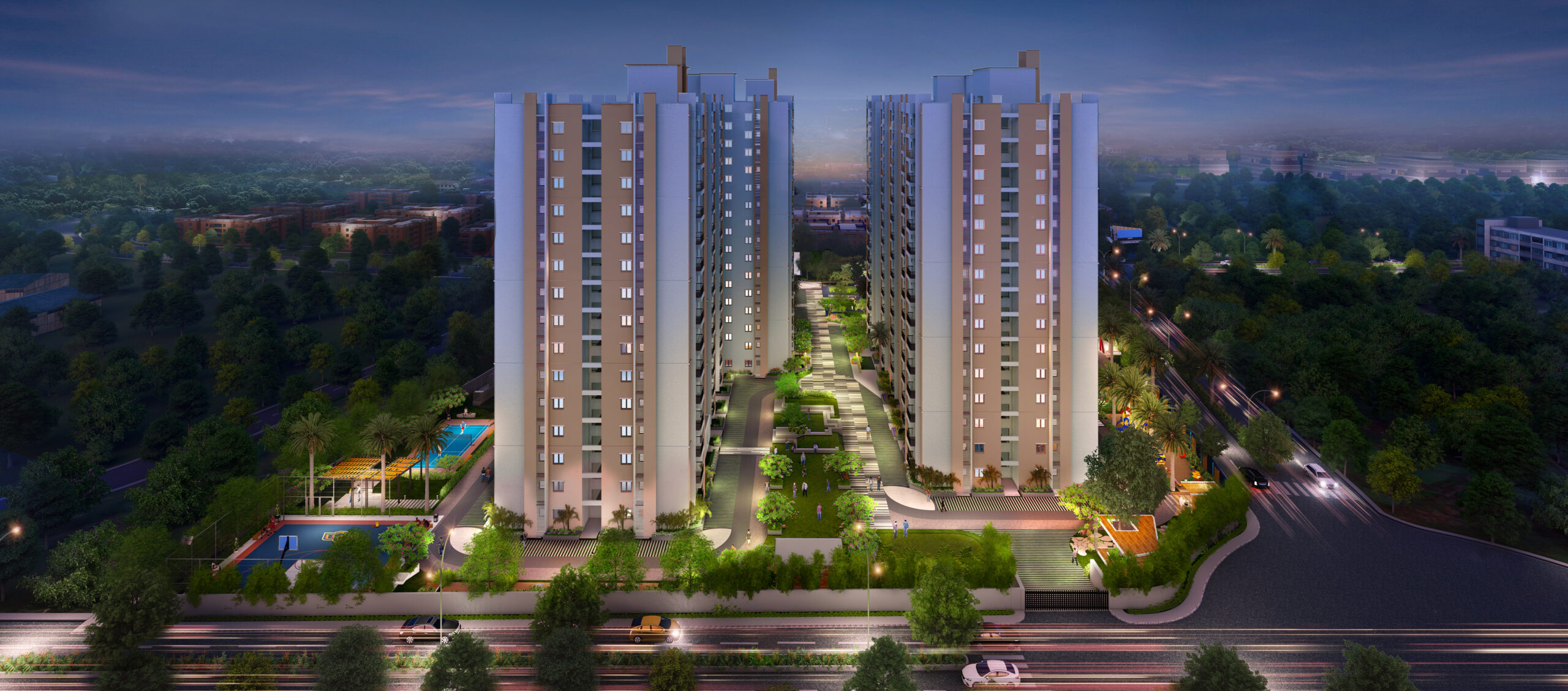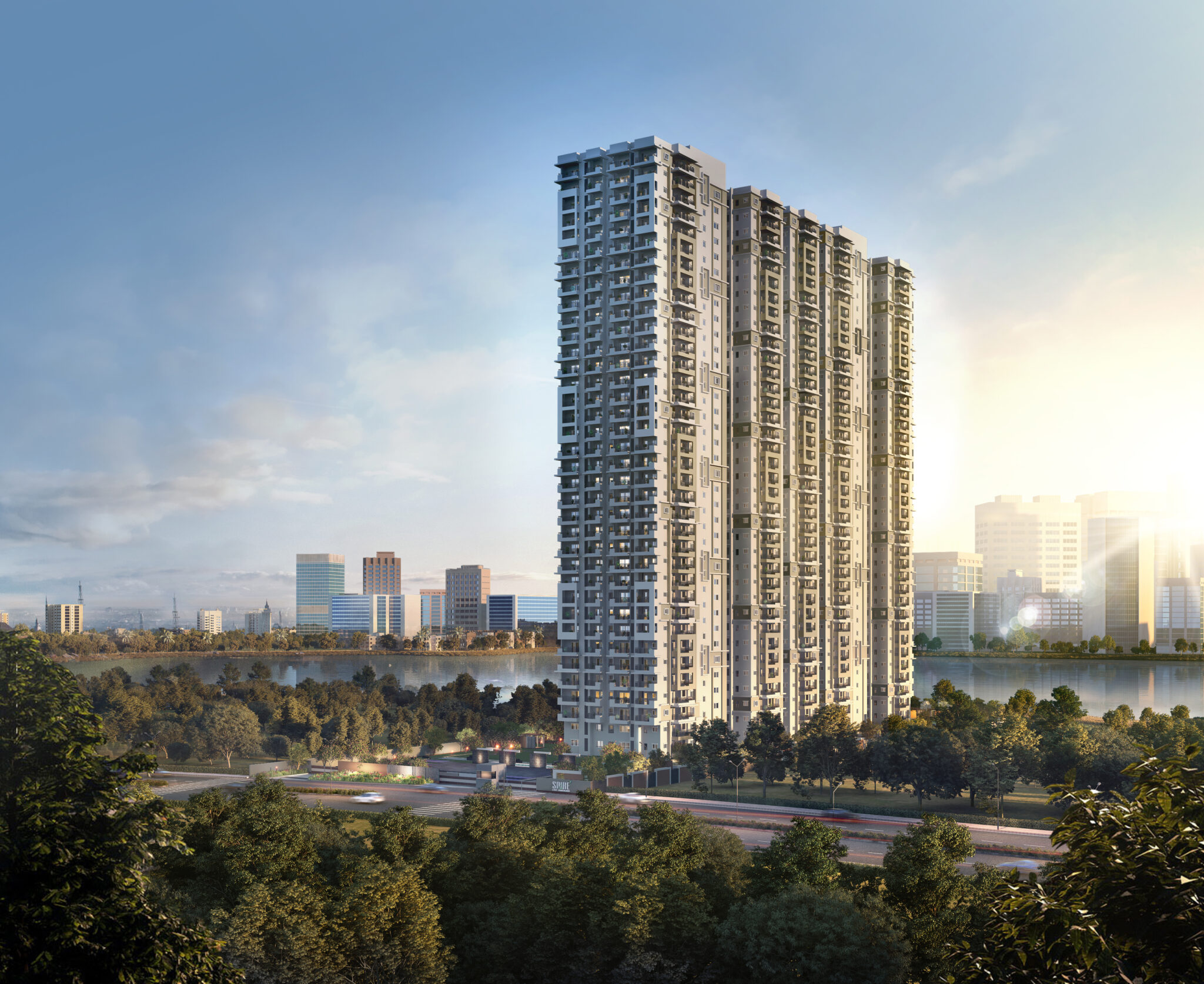How to Choose Car Parking in Gated Communities
Living in a gated community offers numerous benefits, and one essential aspect of this lifestyle is selecting the right apartment car parking space for your vehicle. The process of choosing the ideal parking spot involves various factors and adhering to the rules set by the Residential Welfare Association (RWA). In this blog, we will explore the types of apartment car parking commonly found in gated communities, delve into the RWA rules governing parking, discuss essential factors to consider when choosing a parking space and conclude with some key takeaways for a hassle-free parking experience.

Types of Car Parking in Gated Communities:
Reserved Car Parking
Reserved apartment car parking refers to parking spaces that are exclusively assigned to specific apartments or residents within the gated community. Each resident is allotted a designated parking spot, usually marked with their apartment number or vehicle registration. Reserved parking provides the convenience of having a dedicated spot, ensuring that residents have a guaranteed parking space without the hassle of searching for one.
Benefits:
- Convenience: Residents can park in their designated spot without worrying about finding an available space.
- Security: Having a reserved parking spot reduces the risk of unauthorized vehicles occupying the space.
- Personalization: Residents can customize their parking area and keep it organized according to their preferences.
Visitor Car Parking
Visitor car parking spaces are intended for temporary parking by guests and visitors to the gated community. These spots are usually located near the entrance or in easily accessible areas. The purpose of visitor parking is to accommodate visitors without causing inconvenience to the residents or creating congestion in other parking areas.
Benefits:
- Hospitality: Ample visitor parking encourages residents to host guests comfortably.
- Community Events: Visitor parking areas can be utilized during community events or gatherings.
- Smooth Traffic Flow: Separate spaces for visitors help prevent congestion in resident parking areas.
Elevate Your Lifestyle: Exquisite 3 BHKs | Starting at ₹ 1.8 Crore
Stilt Car Parking
Stilt car parking refers to covered parking spaces located on the ground floor of buildings in the gated community. These parking spaces are constructed beneath the residential blocks, supported by columns (stilts), hence the name. Stilt parking provides protection from weather elements like rain and sun.
Benefits:
- Weather Protection: Vehicles parked in stilt parking are shielded from direct sunlight, rain, and other environmental elements.
- Safety: Stilt parking spaces are usually enclosed, providing an added layer of security against theft or vandalism.
- Space Utilization: Stilt parking maximizes land use by utilizing the ground floor effectively.
Basement Car Parking
Basement car parking areas are enclosed parking spaces situated below the building complex in the gated community. These basement car parking lots are accessible through ramps or elevators, making them an excellent choice for residents who prioritize security and want to keep their vehicles out of sight.
Benefits:
- Enhanced Security: Basement parking areas are typically well-guarded and equipped with surveillance, reducing the risk of unauthorized access.
- Aesthetics: Basement parking helps maintain a clean and clutter-free appearance of the community’s exterior.
- Noise Reduction: Underground parking reduces noise pollution, keeping the residential areas quieter.
Open Car Parking
Open car parking refers to uncovered parking spaces spread throughout the gated community. These spaces are usually found in common areas or near residential blocks. Open parking offers flexibility and a larger number of parking spaces.
Benefits:
- Flexibility: Open parking allows residents to park in various locations, giving them more options.
- Cost-Effectiveness: Open parking areas are relatively cheaper to construct and maintain.
- Easy Access: Residents can quickly drive in and out of open parking spaces without navigating through ramps or elevators.

Rules by RWA for Car Parking
A well-functioning Residential Welfare Association (RWA) is of paramount importance in fostering a sense of harmony and order within a gated community, especially when it comes to managing parking spaces. The RWA takes a proactive approach to ensure a seamless parking experience for all residents by implementing clear and well-defined rules and guidelines. These parking regulations are designed to promote fairness, efficiency, and safety in the community’s parking areas, making it a shared responsibility for all residents to adhere to these rules for the benefit of everyone. Let’s delve deeper into some common RWA parking rules:
Allocation Procedure:
The allocation procedure governs how parking spaces are assigned to residents. Since the number of parking spots may be limited, the RWA employs a fair and transparent method for distribution. This may involve using a lottery system or prioritizing allocation based on seniority, taking into account factors like the date of residency or the number of vehicles owned by a resident. The goal is to prevent disputes and ensure equal opportunities for all residents.
Benefits:
- Fairness: A structured allocation process ensures that each resident has an equal chance of obtaining a parking spot.
- Orderliness: A systematic approach minimizes confusion and prevents arbitrary decisions.
Visitor Parking Rules:
Visitor parking rules are essential for managing temporary parking spaces within the community. RWAs establish guidelines regarding the duration of visitor parking, the process of visitor registration, and penalties for unauthorized parking. Such rules help prevent misuse of visitor parking spaces by residents and ensure that guests have adequate places to park.
Benefits:
- Visitor Comfort: Well-defined rules ensure that guests can find suitable parking spaces during their visit.
- Resident Accountability: Clear guidelines discourage residents from abusing visitor parking for their own convenience.
Parking Timings:
Parking timings dictate the permissible hours for parking in common areas to prevent congestion and streamline traffic flow. RWAs may restrict parking during specific hours to accommodate activities like garbage collection, maintenance work, or community events. These rules are especially relevant in shared parking areas to avoid overcrowding.
Benefits:
- Traffic Management: Regulated parking hours prevent traffic jams and facilitate easy movement within the community.
- Maintenance Facilitation: Allowing parking restrictions during maintenance activities ensures smooth operations and timely completion of tasks.
Sticker or Pass System:
Many RWAs implement a sticker or pass system to identify authorized vehicles and regulate parking access. Residents’ vehicles are issued stickers or passes to display on their windshields, indicating that they are allowed to park within the community. This system helps security personnel easily identify resident vehicles, preventing unauthorized parking.
Benefits:
- Enhanced Security: The sticker or pass system deters outsiders from parking within the community.
- Quick Identification: Security personnel can promptly identify authorized vehicles, enhancing overall security measures.
Penalties and Fines:
To enforce parking rules effectively, RWAs impose penalties and fines for violations such as parking in unauthorized areas, blocking emergency exits, or exceeding parking time limits. The fines act as deterrents, encouraging residents to comply with the established rules and maintain a sense of responsibility towards parking management.
Benefits:
- Rule Adherence: Penalties discourage residents from flouting parking rules and ensure a disciplined parking environment.
- Revenue Generation: Collected fines can be used for community welfare initiatives or to improve parking infrastructure.
Factors to Consider When Choosing a Car Parking Space
Selecting the right car parking space in a gated community is essential for convenience, safety, and overall satisfaction with one’s living experience. Residents should carefully evaluate the following factors before finalizing their parking spot:
Location
The location of the parking spot plays a crucial role in determining its convenience and accessibility. Residents should consider the following aspects related to the parking spot’s location:
- Proximity to the Apartment: Opting for a parking space close to the apartment saves time and effort when bringing in groceries or other belongings.
- Access to Amenities: A car parking spot located near community amenities such as the clubhouse, swimming pool, or gym can enhance the overall living experience.
- Near Elevators or Staircases: Car parking spaces near elevators or staircases allow for easy access to the residential units, especially when carrying heavy loads.
- Away from High-Traffic Areas: Choosing a parking spot away from high-traffic areas minimizes the risk of vehicle damage and reduces noise disturbances.
Size and Space
The size of the parking space is a crucial factor to ensure that the resident’s vehicle fits comfortably and without obstruction. Considerations related to size and space include:
- Accommodating Vehicle Size: Residents should ensure that the parking spot is suitable for their specific vehicle type, whether it’s a compact car, SUV, or sedan.
- Space for Maneuvering: Sufficient space around the parking spot allows for easy entry and exit without the risk of scraping neighboring vehicles.
Security Measures:
Safety and security are paramount when choosing a car parking space. Residents should assess the security measures implemented in the parking area, including:
- CCTV Surveillance: The presence of CCTV cameras helps deter criminal activities and provides a sense of security for parked vehicles.
- Security Guards: A parking area monitored by security personnel adds an extra layer of protection against theft and vandalism.
- Well-lit Parking Areas: Adequate lighting in the parking lot ensures better visibility and reduces the likelihood of accidents or unauthorized activities.
Availability:
Before finalizing a car parking spot, residents should check for parking space availability. Some gated communities may have a limited number of parking spaces, leading to a waiting list for residents who do not currently have an assigned spot. Understanding the availability and waiting list procedures, if applicable, is crucial in making an informed decision.

Summary
Choosing the right paid car parking space is a crucial aspect of living in a gated community, offering a range of benefits. This comprehensive guide explores the various types of car parking options available in gated communities, including reserved, visitor, stilt, basement, and open car parking. Additionally, it delves into the common car parking rules established by Residential Welfare Associations (RWAs), covering allocation procedures, visitor parking guidelines, parking timings, the sticker or pass system, and penalties for violations.
To make an informed decision, residents must carefully consider factors such as location, proximity to amenities, size, security measures, availability, and future needs when choosing a car parking space. By adhering to the RWA rules and taking these factors into account, residents can ensure a smooth and enjoyable parking experience within their gated community. A well-chosen parking spot enhances convenience, safety, and overall satisfaction, contributing to a harmonious living environment for all residents.
Check out ASBL Spire, ASBL Springs, and ASBL Spectra.
Open parking refers to uncovered parking spaces in the open air, exposed to the elements. Covered parking, on the other hand, provides shelter to vehicles and is usually located under a structure like a canopy, stilt, or basement, protecting them from weather conditions such as rain, sun, and snow.
Stilt parking is generally considered better than basement parking due to its accessibility and ease of entry and exit. Stilt parking is located on the ground floor, allowing for quicker access, whereas basement parking requires navigating through ramps or elevators, which can be less convenient.
Yes, car stickering is legal in India, but there are certain regulations and guidelines that must be followed. The stickering should not obstruct the driver’s view or violate any specific laws related to advertising or offensive content. Additionally, the stickering must comply with local road transport authorities’ rules and regulations.
45-degree angle is the most efficient car parking angle. This parking configuration allows for easy entry and exit, maximizing the number of parking spaces while ensuring smooth traffic flow in parking lots. It strikes a balance between maneuverability and space utilization, making it a widely used and effective parking angle in various parking facilities.













